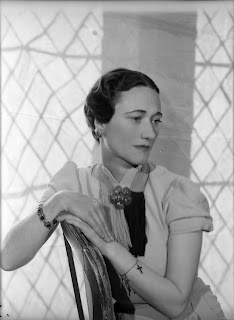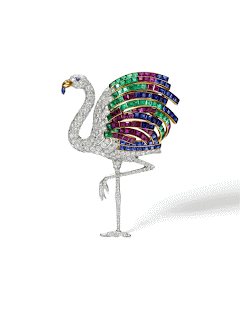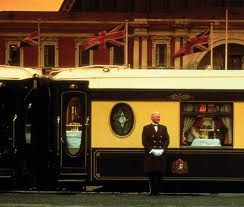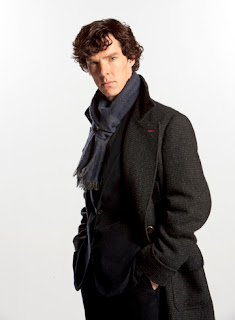Author and oncologist Siddhartha Mukherjee’s debut book charts the history of cancer treatment over the centuries. Amazon said that the book is ” . . . . a sweeping epic of obsession, brilliant researchers, dramatic new treatments, euphoric success and tragic failure, and the relentless battle by scientists and patients alike against an equally relentless, wily, and elusive enemy. From the first chemotherapy developed from textile dyes to the possibilities emerging from our understanding of cancer cells, Mukherjee shapes a massive amount of history into a coherent story with a roller-coaster trajectory: the discovery of a new treatment–surgery, radiation, chemotherapy–followed by the notion that if a little is good, more must be better, ending in disfiguring radical mastectomy and multidrug chemo so toxic the treatment ended up being almost worse than the disease.”
It is impossible to consider the history of the treatment of cancer without recalling Fanny Burney’s harrowing account of the mastectomy she underwent during the Regency period. It is compelling, horrifying and immediate in its very personal nature. We reprint it for you here . . .
AN AUTOBIOGRAPHICAL ACCOUNT OF MASTECTOMY BY FANNY BURNEY
Fanny Burney (Madame d’Arblay) first felt pain in her breast in August of 1810. Cancer was diagnosed, and Baron Larrey, Napoleon’s surgeon, agreed to operate. To spare her suspense, she was given little notice. The “M. d’A.” mentioned is her husband and Alexander her son.
*** WARNING: The following mastectomy account may prove disturbing.
30 September 1811: I dressed, aided, as usual for many months, by my maid, my right arm being condemned to total inaction. A letter was delivered to me to acquaint me that at 10 o’clock M. Larry would be with me, properly accompanied, and to exhort me to rely as much upon his sensibility and his prudence, as upon his dexterity and his experience; he charged me to secure the absence of M. d’A: and told me that the young Physician who would deliver me his announcement would prepare for the operation, in which he must lend his aid: and; also that it had been the decision of the consultation to allow me but two hours notice.
Dr. Aumont, the Messenger and terrible Herald, was in waiting; M. d’A stood by my bedside; I affected to be long reading the Note, to gain time for forming some plan, and such was my terror of involving M. d’A in the unavailing wretchedness of witnessing what I must go through, that it conquered every act as if I were directing some third person. The detail would be too Wordy, as James says, but the wholesale is – I called Alex to my Bedside, and sent him to inform M. Barbier Neuville, chef du division du Bureau de M. d’A, that the moment was come, and I entreated him to write a summons upon urgent business for M. d’A and to detain him till all should be over. Speechless and appalled, off went Alex, and, as I have since heard, was forced to sit down and sob in executing his commission. I then, by the maid, sent word to the young Dr. Aumont that I could not be ready till one o’clock: and I finished my breakfast, and- not with much appetite, you will believe! forced down a crust of bread, and hurried off, under various pretenses, M. d’A. He was scarcely gone, when M Du Bois arrived: I renewed my request for one o’clock: the rest came; all were fain to consent to the delay, for I had an apartment to prepare for my banished Mate. This arrangement, and those for myself, occupied me completely. Two engaged nurses were out of the way – I had a bed, Curtains and heaven knows what to prepare – but business was good for my nerves. I was obliged to quit my room to have it put in order: – Dr. Aumount would not leave the house; he remained in the Sallon, folding linen! – He had demanded 4 or 5 old and fine left off under garments – I glided to our Book Cabinet; sundry necessary works and orders filled up my time entirely till One O’clock, When all was ready – but Dr. Moreau then arrived, with news that M. Dubois could not attend till three. Dr. Aumont went away – and the Coast was clear.
This, indeed, was a dreadful interval. I had no longer anything to do – I had only to think – TWO HOURS thus spent seemed never-ending. I would fain have written to my dearest Father – to you, my Esther – to Charlotte James – Charles – Amelia Lock – but my arm prohibited me: I strolled to the Sallon – I saw it fitted with preparations, and I recoiled – But I soon returned; to what effect disguise from myself what I must so soon know? – yet the sight of the immense quantity of bandages, compresses, spunges, Lint – made me a little sick: – I walked backwards and forwards till I quieted all emotion, and became, by degrees, nearly stupid – torpid, without sentiment or consciousness; – and thus I remained till the Clock struck three. I rang for my Maid and Nurses, – but before I could speak to them, my room, without previous message, was entered by 7 Men in black, Dr. Larry, M. Dubois, Dr. Moreau, Dr. Aumont, Dr. Ribe, and a pupil of Dr. Larry, and another of M. Dubois. I was now awakened from my stupor – and by a sort of indignation – Why so many? and without leave? – But I could not utter a syllable. M. Dubois acted as Commander in Chief. Dr. Larry kept out of sight; M. Dubois ordered a Bed stead into the middle of the room. Astonished, I turned to Dr. Larry, who had promised that an Arm Chair would suffice; but he hung his head, and would not look at me. Two old mattrasses M. Dubois then demanded, and an old Sheet. I now began to tremble violently, more with distaste and horror of the preparations even than of the pain. These arranged to his liking, he desired me to mount the Bed stead. I stood suspended, for a moment, whether I should not abruptly escape – I looked at the door, the windows – I felt desperate – but it was only for a moment, my reason then took the command, and my fears and feelings struggled vainly against it. I called to my maid – she was crying, and the two Nurses stood, transfixed, at the door. Let these women all go! cried M. Dubois. This order recovered me my Voice – No, I cried, let them stay! The maid and one of the nurses ran off – I charged the other to approach, and she obeyed. My distress was apparent for M. Dubois himself now softened, and spoke soothingly. Can You, I cried, feel for an operation that, to You, must seem so trivial? Trivial, he repeated – taking up a piece of paper, which he tore, unconsciously, into a million of pieces – he stammered, and could not go on. No one else attempted to speak, but I was softened myself, when I saw even M. Dubois grow agitated, while Dr. Larry kept always aloof, yet a glance showed me he was pale as ashes. I knew not, positively, then, the immediate danger, but every thing convinced me danger was hovering about me, and that this experiment could alone save me from its jaws.
I mounted, therefore, unbidden, the Bead stead – and M. Dubois placed me upon the mattress, and spread a cambric handkerchief upon my face. It was transparent, however, and I saw the Bed surrounded by the 7 Men and my Nurse. I refused to be held; but when, Bright through the cambric, I saw the glitter of polished Steel – I closed my Eyes. A silence the most profound ensued. Again throug
h the cambric, I saw the hand of M. Dubois held up, while his forefinger first described a straight line from top to bottom of the breast, secondly a Cross, and thirdly a Circle; intimating that the WHOLE was to be taken off. Excited by this idea, I started up, threw off my veil, and I held my hand under it, and explained the nature of my sufferings, which all sprang from one point, though they darted into every part. I was heard attentively, but in utter silence, and M. Dubois then replaced me as before, and, as before, spread my veil over my face.
My dearest Esther, – and all my dears to whom she communicates this doleful ditty, will rejoice to hear that this resolution once taken, was firmly adhered to, in defiance of a terror that surpasses all description, and the most torturing pain. Yet – when the dreadful steel was plunged into the breast I needed no injunctions not to restrain my cries. I began a scream that lasted unintermittingly during the whole time of the incision – and I almost marvel that it rings not in my Ears still! so excruciating the agony. When the wound was made, and the instrument was withdrawn, the pain seemed undiminished, for the air that suddenly rushed into those delicate parts felt like a mass of minute but sharp and forked poniards. When I felt the instrument cutting against the grain, while the flesh resisted in a manner so forcible as to oppose and tire the hand of the operator, who was forced to change from the right to the left – then, indeed, I thought I must have expired. I attempted no more to open my Eyes, – they felt as if hermettically shut, and so firmly closed, that the Eyelids seemed indented into the Cheeks. The instrument this second time withdrawn, I concluded the operation over – Oh no! presently the terrible cutting was renewed – and worse than ever, to separate the bottom, the foundation of this dreadful gland from the parts to which it adhered – Again all description would be baffled – yet again all was not over, – Dr. Larry rested but his own hand, and – Oh Heaven! – I then felt the Knife rackling against the breast bone – scraping it! – This performed, while I yet remained in utterly speechless torture, I heard the Voice of Mr. Larry, – (all others guarded a dead silence) in a tone nearly tragic, desire everyone present to pronounce if anything more remained to be done; The general voice was Yes, – but the finger of Mr. Dubois – which I literally felt elevated over the wound, though I saw nothing, and though he touched nothing, pointed to some further requisition – and again began the scraping!
My dearest Esther, not for days, not for Weeks, but for Months I could not speak of this terrible business without nearly again going through it! I was sick, disordered by a single question – even now, 9 months after it is over, I have a headache going on with the account! To conclude, the evil was so profound, the case so delicate, and the precautions necessary for preventing a return so numerous, that the operation, including the treatment and the dressing, lasted 20 minutes! a time, for sufferings so acute, that was hardly supportable – However, I bore it with all the courage I could exert, and never moved, nor stopt them, nor resisted, nor spoke. Twice I believe I fainted; at least, I have two total chasms in my memory of this transaction, that impede my tying together what passed. When all was done, and they lifted me up that I might be put to bed, my strength was so totally annihilated, that I was obliged to be carried, and could not even sustain my hands and arms, which hung as if I had been lifeless: while my face, as the Nurse has told me, was utterly colourless. This removal made me open my Eyes – and I then saw my good Dr. Larry, pale nearly as myself, his face streaked with blood, and its expression depicting grief, apprehension, and almost horror.
* * * * * *
Fanny was born 1752, the daughter of a physician. She lead a unique life and, thankfully, documented her experiences at court and amongst the highest society in her diaries. Passages from these are cited in many works on the Georgian and Regency periods, as they contain much minute detail not found elsewhere. In 1786, Fanny was appointed Second Keeper of the Wardrobe to Her Majesty Queen Charlotte. Her father, upon being introduced to the Prince Regent, spent time discussing music with him. In addition to her social duties, Fanny was a novelist, whose works, including “Cecilia” and “Evelina” were favorites of Jane Austen’s. The operation related above, whilst horrific, was obviously a success, as Fanny lived until 1840.
Suggestions for further reading:
Burney, Fanny, Diary and Letters (18c), ed. C. Barrett, 1905
——-The Early Journals and Letters, vol. 1, Univ of Toronto Press 1989 ISBN# 0-7735-0538-5
Chaplin, Arnold, Medicine in England During the Reign of George III, AMS Press ISBN 0-404-13244-8
Loudon, Irvine, Medical Care and the General Practitioner 1750- 1850, Oxford 1986





















